Reviews
Andrew Davis
USA, 2002
Credits
Review by Adam Balz
Posted on 24 July 2009
Source Warner Brothers DVD
Categories Favorites: The Action Movie
It seems that the human race cannot discriminate between a tiny minority of persons who may be objectionable and the ethnic strain from which they spring. If the Italians have the Mafia, all Italians are suspect; if the Jews have financiers, all Jews are part of an international conspiracy; if the Arabs have fanatics, all Arabs are violent. In the world today, more than ever, barriers of this kind must be broken, for we are all more alike than we are different.
—Susan M. Akram
In the past, when we talked about the prototypical action film, certain motifs were always part of the discussion: a morally clear protagonist facing off against an immorally definite antagonist; flat, quirky, and expendable supporting characters; vixens; diabolical plots; advanced weaponry; glistening pectorals; and a banquet of explosions, to name a few. Eight years ago, though, September 11 and its aftermath illuminated another aspect, one that had been either downplayed or ignored by a majority of the critical community, and changed our general perspectives on what constitutes adequate, appropriate sweat-and-bullets entertainment: the villain as stereotype.
While no race or group of people has been spared, stereotyping in action films most often victimizes those of Middle Eastern descent. In fact, Middle Eastern men and women have been so overwhelmingly targeted by filmmakers that Jack Shaheen, a Lebanese-American academic and media analyst, was able to compile a voluminous study of 500 films featuring Arab characters, including the Indiana Jones and Mummy films, Ben Hur, Rules of Engagement, Gladiator, G.I. Jane, and Lawrence of Arabia. Titled Reel Bad Arabs, his book provides short summaries of each film, along with a list of the cast and crew, the light in which Arabs are depicted, and whether or not the film is recommendable. And while the book’s hefty subject forces Shaheen to curtail more in-depth examinations of all 500 depictions, it’s a stand-alone examination of a shameful cinematic tradition.
While this trend was not completely ignored in the years before September 11, it seemed to be less of a pressing issue than it is now. Perhaps the greatest challenge to Arab stereotypes to date came in 1998, when writer-director Edward Zwick was forced to defend his film The Siege after the American-Arab Anti-Discrimination Committee, as well as a number of critics, disparaged the film’s depiction of Middle Eastern terrorists. Even now, after a greater number of critics and journalists have taken to documenting treatment of Arabs in media and leading challenges against film studios and television networks, the stereotypes prevail, sometimes even to the point of deference.
But what does all of this have to do with Collateral Damage, a film completed before the 9/11 attacks in which Arnold Schwarzenegger, a Los Angeles firefighter, seeks revenge on the men and women who killed his family—a group of Colombian, not Middle Eastern, terrorists? Collateral Damage, which is far from being one of Schwarzenegger’s best films, or even one of his most memorable, is important because of the edits it underwent after September 11 and because of its overlooked - and most likely unintentional - message about our perceptions concerning the people behind terrorism.
Schwarzenegger is Gordy Brewer, a well-respected firefighter and family man whose life is torn apart by a terrorists attack in Los Angeles: a bomb intended to kill CIA official Peter Brandt instead kills Brewer’s wife and son, among others, at a downtown cafe. When Brandt completely shuts Brewer out of the investigation, then informs him that the American government is negotiating for peace with the terrorists - a Columbian guerrilla force led by Claudio “the Wolf” Perrini, a man whom Brewer happened to pass by seconds before the Los Angeles explosion - Brewer decides to take matters into his own hands by slipping into Colombia through Panama and going in search of Perrini himself.
Colombia is depicted as a nation of unruly terrain, suspicious individuals, and constant violence, and all eyes falls immediately on Brewer, who was warned before leaving Los Angeles that kidnapping Americans is a sort of unofficial Colombian sport. At first he prevails, surviving the Colombian wilderness, a well-armed checkpoint and the ensuing gunfire, an escape down root-and-vine embankments, and even a trip down a towering waterfall. After emerging from the water seemingly unscathed, he makes his way to a local village, where he saves a woman and her son from being run down by a motorcycle. He is then arrested by the local police and, through a jailed Canadian drunk played by John Turturro and a musically inclined cocaine dealer played by John Leguizamo, finds his way to Perrini’s headquarters, where an attempt to kill the leader is foiled when the same woman and her son appear near his intended target. As it turns out, they are Perrini’s wife Selena and their son, and Brewer’s need to yet again save their lives guarantees his capture by Perrini’s soldiers.
The scenes that follow, in which Brewer is alternately denounced as a typically hypocritical American by Perrini and nurtured by Selena, initially come off as some of the film’s worst—an attempt, it seems, by the filmmakers to assuage the anti-American vitriol directed at Brewer, who we understand is supposed to represent the good and wholesome America, by offering up a fellow Colombian who sees the firefighter as someone with the qualities of a natural caregiver. In fact, director Andrew Davis squanders quite a bit of time contrasting the two men, often to the point of excess, as is the case when Perrini confronts Brewer about his changed nature:
Perrini: I remember you from Los Angeles. That was the face of a man who saved lives. Well, your face has changed. You think your wife and son would recognize you now? Brewer: I remember your face, too. The smile, just before you killed them. You’re gonna pay for that. You’re gonna pay for that. Perrini: Well, it seems we’re both willing to kill for a cause. So what’s the difference between you and I? Brewer: The difference is, I’m just gonna kill you.
As it turns out, Perrini’s violent campaign is also one guided by vengeance: he and his wife lost a daughter in an American attack years before, when Perrini was a schoolteacher—yet another example of the filmmakers drawing comparisons between the two men, this time through similarly respectable careers.
At the same time, the filmmakers are also contrasting Brewer with Brandt, who has decided to use his evaporating resources to save Brewer while simultaneously demolishing Perrini’s compound and killing anyone who stands in his way. (At one point, he screams “Keep firing! Kill them all!” as the innocent civilians of Perrini’s compound are mowed down.) While Brewer budgets his time, eventually planning an escape with Selena Perrini and her son, Brandt’s abrasive, warmonger bravado almost leads to the firefighter’s death. Perrini himself, however, escapes to Washington D.C. before the attack, leading Brewer to demand that Perrini’s wife and son be taken to back to the United States to identify the Wolf’s next target.
Because Collateral Damage underwent edits after September 11, it’s difficult to pinpoint what has been changed from Davis’ original film and what remains the same, or at least what’s been altered slightly. Until this point in the film, the plot has progressed as one would expect: the hero has met the villain, they’ve exchanged decidedly profound words, and the minor characters have played their parts. When Brewer and Perrini’s family arrive in America, though, the film shifts momentously, leading to the ultimate plot twist in which we discover that Selena is not the sympathetic, violence-weary wife and mother we had taken her for, but rather someone even more important to the cause than the Wolf himself. In fact, it could be argued that Selena Perrini is the Wolf, the leader of the terrorists and the shadowy figure who appears in videos taking credit for and announcing future attacks. It’s Selena who’s hidden a bomb in one of her son’s toys, which is carried into State Department and intended to not only disable the United State’s abilities to find and stop terrorists but also kill top-level government officials, including the Secretary of State. Brewer realizes her plan in time to dispose of the toy through a window but not soon enough to prevent her escape or save the life of Peter Brandt, whom she shoots while making her escape in an elevator.
This turn of events may be the most important aspect of the film, though the reason for its relevancy is almost assuredly unintentional. The filmmakers, without completely realizing it, have provided us with an important lesson in how we see others in relation to national security, namely that we see terrorists in stereotypical terms rather than in real terms. The reason Selena Perrini doesn’t raise our suspicions at first is because we see Claudio - a bearded, gun-toting male who spouts anti-American rhetoric - and naturally assume there could be nobody else in charge, especially not a wife and mother who tends to the hero’s well-being. Our judgments are clouded by preconceived notions - about how a fanatic should look and act, what they should say, how they should treat others - thereby rendering us unable to observe Selena with any sense of caution or objectivity. I doubt Andrew Davis and his screenwriters, as well as whoever conducted the post-9/11 rewrites and edits, set out to do anything more than tell an engaging story capped by an unexpected plot development. Calculated or not, there is a lesson buried beneath the stereotype of the anti-American terrorist - who is, in this case, Colombian - about our misdirected attitudes towards “friend” and “enemy.”
Ironically, Collateral Damage was also the name of a 2006 book on post-9/11 America edited by Paul Kimmel and Chris Stout, which was subtitled The Psychological Consequences of America’s War on Terrorism. In one of the assembled essays, psychologist Nina Thomas discusses how the increased levels of anti-Arab and anti-Muslim sentiments following September 11 led to greater hesitancy and fear in immigrant communities, most notably those who had arrived in the United States from the Middle East. As Thomas notes, most of the detentions immediately following 9/11 came about because of “so-called profiling by ordinary citizens—for example, a tip from a neighbor who notified the FBI when a box with Arabic writing on it was delivered.” Essentially, this was nothing more than xenophobic paranoia mixed with fear. Thomas also notes that, “By targeting and alienating Muslim and Arab communities, immigration actions since September 11 have deepened the perceptions abroad that the United States is anti-Muslim and that its democratic values and principles are hypocritical.”
Again, it’s difficult to condemn the makers of Collateral Damage for their use of stereotypes, even ones that might have been employed unknowingly to exploit the audience’s prejudices, when the original intentions of the filmmakers are unknown. The film was always set in Colombia, we know that for sure, but there are hints of a different plot once hurriedly abandoned and now easily forgotten, one involving a hijacker played by actress Sofia Vergara—which is yet another undermining of our expectations, as we associate hijackers with men. And perhaps it’s better that we as the audience remain in the dark about Andrew Davis’ intentions, lest we uncover something even worse than what we already have.
Collateral Damages, though, is not Schwarzenegger’s first encounter with stereotypes. In director James Cameron’s 1994 film True Lies, Schwarzenegger portrays a secret government agent who must balance his home life - a failing marriage, a distant daughter - with his pursuit nuclear weapons stolen by Middle Eastern terrorists. “Make no mistake,” writes Jack Shaheen, “Cameron’s True Lies is a slick film perpetuating sick images of Palestinians as dirty, demonic, and despicable peoples. The reel portraits are so remote from reality as to give normal viewers the willies.” In both True Lies and Collateral Damage, Schwarzenegger prevails, defeating the terrorists on American soil and thereby saving his country. In the latter film, however, the victory seems bittersweet; Collateral Damage ends with a shot of Brewer carrying the Perrini son to a government automobile and being driven away while a voice-over reporter tells her viewers - and, concurrently, us - that Brewer would be awarded the Presidential Medal of Freedom and was unavailable for comment. Unlike his family man character from True Lies, who is seen dining with his family in one of the film’s closing scenes, Schwarzenegger’s Brewer has no family to return to in Collateral Damage, though the suggestion is that he’s adopted the son of two Colombian terrorists in a move that is either a demonstration of cross-cultural compassion and forgiveness or a slapdash and deeply perplexing psychological need to fulfill the newfound emptiness in his life.
As Jack Shaheen himself notes in Reel Bad Arabs, there have been quite a few positive depictions of Middle Eastern men and women in cinema, most notably in Three Kings and The Thirteenth Warrior, though both of those films had ended their theatrical runs by 2001. Now that there is more critical attention devoted to preventing anti-Arab stereotypes, one hopes this disgusting practice will fade away with some level of grace and apology, though Hollywood is often stubborn when faced with a demand for change.
More Favorites: The Action Movie
-

First Blood
1982 -

The General
1926 -

The Running Man
1987 -

Guns
1990 -

Highlander
1986 -

Death Race 2000
1975 -

Scaramouche
1952 -

Do or Die
1991 -
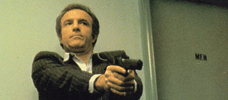
Thief
1981 -

Mission: Impossible
1996 -

Invasion U.S.A.
1985 -

Rambo: First Blood Part II
1985 -

Bullitt
1968 -

Hard Hunted
1992 -

The Fugitive
1993 -

Kindergarten Cop
1990 -
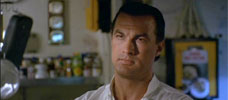
Under Siege
1992 -
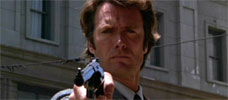
Dirty Harry
1971 -
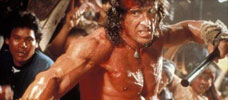
Rambo III
1988 -

Public Enemies
2009 -

Day of the Warrior
1996 -

The Good, the Bad, the Weird
2008 -
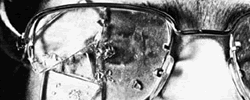
Straw Dogs
1971 -

Die Hard
1988 -

Con Air
1997 -

Collateral Damage
2002 -
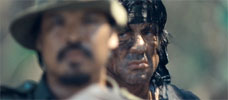
Rambo
2008
We don’t do comments anymore, but you may contact us here or find us on Twitter or Facebook.



